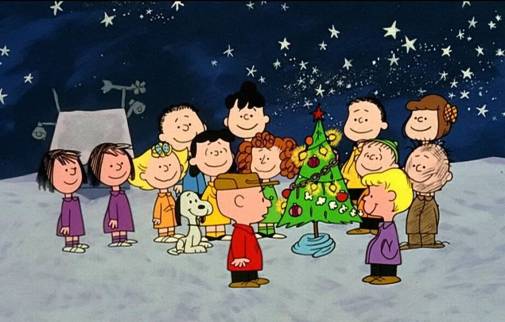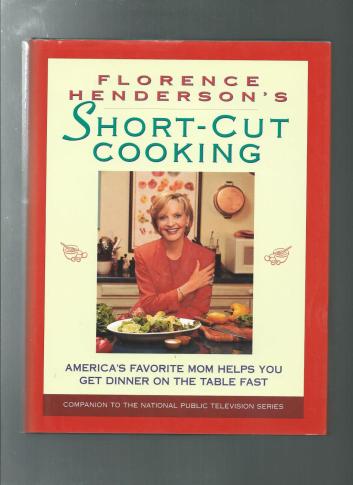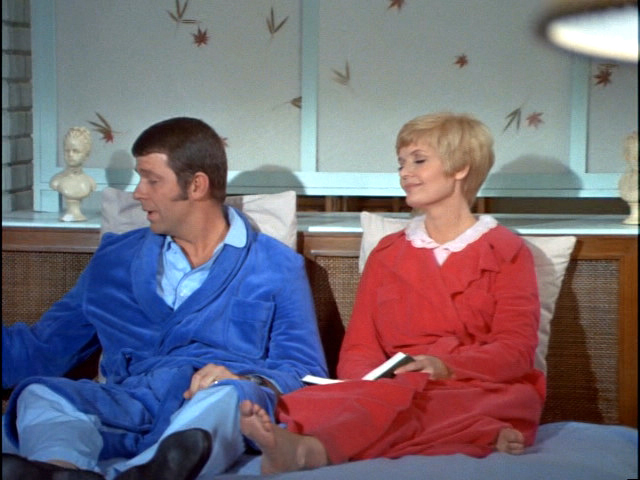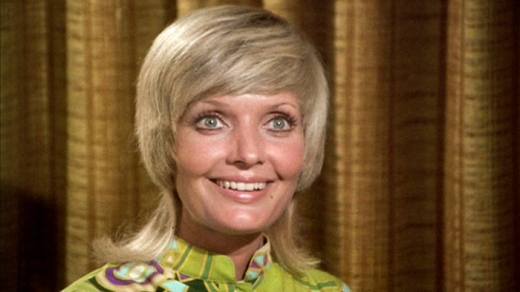Ask a variety of people from ages 6-106 and they will tell you it’s just not Christmas until they have seen Rudolph the Red-Nosed Reindeer, A Charlie Brown Christmas, How the Grinch Stole Christmas, and Frosty the Snowman. They may have other favorites on their list but all ages can agree on these four. In our house, The Ozzie and Harriet Nelson episode, “Busy Christmas” is a given every December. Recently I heard sportscaster Bill Michaels say that he saved a night for hot chocolate and “It’s a Wonderful Life.” We all have those “other” shows that are on our must-see list. However, even with the Nelson show, the animated specials from the 1960s have to be seen at least once or there’s not as much fa-la-la in the house. Let’s look at each of the four.
Rudolph, the Red-Nosed Reindeer, 1964
Rudolph is born to Donner the Reindeer and Donner’s wife. He is discovered by Santa to have a shiny, glowing red nose. Donner, regardless of Rudolph’s defect, trains him to be a normal reindeer with skills such as gathering food and hiding from the “Abominable Snow Monster,” a giant, furry white beast. To hide Rudolph’s nose, Donner puts dirt on it to cover it with a black coating. This causes Rudolph to talk in a funny accent. Rudolph joins his peers at the Reindeer Games, where he meets Fireball, who is initially friendly and Clarice, a female spectator who takes a liking to Rudolph. Clarice’s flirtation inspires Rudolph to perform better than all of his peers at flying, but in his excitement he knocks the black cover off his nose, revealing a red glow that causes Fireball and the others to turn against him; this distraction, in turn, prompts the coach (Comet) to ban Rudolph from the Reindeer Games. Clarice remains loyal to him, only to be ordered by her father not to shame the family by associating with “a red-nosed reindeer.”

Rudolph soon runs into Hermey, an elf who was forced out of his job at the North Pole’s toy factory; Hermey showed a total lack of interest in the toy making and singing aspects of being an elf and instead wanted to pursue dentistry. They come to the conclusion that they’re both misfits and decide to run away together. On their aimless journey, they run into Yukon Cornelius, the self-described “greatest prospector of the North” who nevertheless seems to never find any silver or gold, and attempt to stay away from the Bumble, an abominable snow monster. Their journey leads them to the Island of Misfit Toys, where toys go when they are abandoned by their owners. King Moonracer, the winged lion that lords over the Island, refuses to let them stay there permanently, instead telling the trio to return home and tell Santa Claus of the toys’ plight, in exchange for one night’s stay on the island. Rudolph refuses the offer and, fearing for his friends’ life, runs off alone.

A now older Rudolph, still unable to find a place in the world, returns home to the North Pole, only to find that his family and Clarice had left to look for him and are now about to be eaten by the Bumble. With the help of Hermey and Yukon, who have come to look for him, they lure the Bumble away and pacify him by knocking him unconscious and allowing Hermey (with dental skills he has acquired by reading books) to remove his sharp teeth. Everyone eventually returns to Santa’s workshop, where a dismayed Santa Claus breaks the bad news that the weather is too bad to take the sleigh out and that Christmas would be canceled. Santa changes his mind when he notices Rudolph’s red nose and asks Rudolph to lead the sleigh team, which he happily accepts.
A Charlie Brown Christmas, 1965
The special begins on a frozen pond, put to use as an ice rink by the Peanuts cast, who skate together as the song “Christmas Time is Here” is heard over the opening credits.
It’s Christmas season, and Charlie Brown is depressed. He confides in Linus this fact, citing his dismay with the over-commercialization of Christmas and his inability to grasp what Christmas is all about; Linus dismisses it as typical Charlie Brown behavior at first. Brown’s depression and aggravation only get exacerbated by the goings-on in the neighborhood. Though his mailbox is empty, he tries sarcastically to thank Violet for the card she never sent him, but Violet just uses the opportunity to put Brown down again. Eventually, Charlie Brown visits Lucy in her psychiatric booth. Lucy, after presumptively diagnosing him with various phobias and admitting she wants real estate as a Christmas gift, determines that Charlie Brown needs more involvement and recommends that he direct a Christmas play. On his way to the auditorium, he finds Snoopy decorating his doghouse for a neighborhood lights and display contest. Continuing onward, he runs into his sister Sally, who asks him to write her letter to Santa Claus. When she hints at having an extremely long and specific list of requests, and says she will accept money as a substitute (“tens and twenties”– a massive amount for a child of Sally’s age in the 1960s), Charlie Brown becomes even more dismayed.

Charlie Brown arrives at the rehearsals, but he is unable to control the situation as the uncooperative kids are more interested in modernizing the play with dancing and lively music. Thinking the play requires “the proper mood,” Charlie Brown decides they need a Christmas tree. Lucy takes over the crowd and dispatches Charlie Brown to get a “big, shiny aluminum tree.” With Linus in tow, Charlie Brown sets off on his quest. When they get to the tree market, filled with numerous trees fitting Lucy’s description, Charlie Brown zeroes in on the only real tree on the lot—a tiny sapling. Linus is reluctant about Charlie Brown’s choice, but Charlie Brown is convinced that after decorating it, it will be just right for the play. They return to the auditorium with the tree, at which point the children (particularly the girls and Snoopy) ridicule, then laugh at Charlie Brown before walking away. In desperation, Charlie Brown loudly asks if anybody really knows what Christmas is all about. Linus, standing alone on the stage, states he can tell him, and recites the angels’ message to the shepherds from the Gospel of Luke, chapter 2, verses 8 through 14 … ending with “That’s what Christmas is all about, Charlie Brown.”

Charlie Brown quietly picks up the little tree and walks out of the auditorium, intending to take the tree home to decorate and show the others it will work in the play. When he arrives, he stops at Snoopy’s decorated doghouse, which now sports a first prize blue ribbon for winning the display contest. He puts an ornamental ball on the top of his tree; the branch, with the ball still on it, promptly flops over to one side instead of remaining upright, prompting him to declare “I’ve killed it” and run off in disgust at his perpetual failure. Linus and the rest of the group, along with Snoopy, quietly arrive outside Snoopy’s doghouse. Linus goes up to the tree and gently props the drooping branch back to its upright position, wrapping his security blanket around the tree. After they reconsider their previous stance, they add the remaining decorations from Snoopy’s doghouse to the tree and start humming “Hark! The Herald Angels Sing.” Charlie Brown returns, surprised at the humming and the redecorated tree, as his peers greet him with a joyous “Merry Christmas, Charlie Brown!” The entire group joins to sing the first verse of “Hark! The Herald Angels Sing” as the special ends.
How the Grinch Stole Christmas, 1966
The Grinch is a bitter, grouchy, cave-dwelling creature with a heart “two sizes too small” who lives on snowy Mount Crumpit, a steep high mountain just north of the town of Whoville, home of the merry and warm-hearted Whos. His only companion is his unloved, but loyal dog, Max. From his cave, the Grinch can hear the noisy Christmas festivities that take place in Whoville. Annoyed, he decides to stop Christmas from coming by stealing their presents, trees, and food for their Christmas feast. He crudely disguises himself as Santa Claus, and forces Max, disguised as a reindeer, to drag a sleigh to Whoville. Once there, the Grinch slides down the chimney and steals all of the Whos’ Christmas presents, the Christmas tree, and the log for their fire. He is briefly interrupted in his burglary by Cindy Lou, a little Who girl, but concocts a crafty lie to effect his escape from her home.


The Grinch then takes his sleigh to the top of Mount Crumpit, and prepares to dump all of the presents into the abyss. As dawn breaks, he expects to hear the Whos’ bitter and sorrowful cries, but is confused to hear them singing a joyous Christmas song instead. He puzzles for a moment until it dawns on him that “maybe Christmas, perhaps, means a little bit more” than just presents and feasting. The Grinch’s shrunken heart suddenly grows three sizes. The reformed Grinch saves Max from possible death and returns all of the Whos’ presents and trimmings and is warmly invited to the Whos’ feast, where he has the honor of carving the Roast Beast.
Frosty the Snowman, 1969
One day in a school shortly before Christmas, an inept magician named Professor Hinkle is hired to perform for the children. Following this, the children go outside for recess and build a snowman, whom they name Frosty. However, Hinkle’s rabbit Hocus Pocus, escapes from the building while wearing his hat, which the children decide to put on top of Frosty’s head. To their surprise, the magic of the hat causes Frosty to come to life.
This delights the students, but after seeing that the hat is actually magic, the agitated Hinkle wants it back. The children refuse to turn it over to him, but he eventually gets it. After he leaves, Hocus returns the hat to the children, thus bringing Frosty to life for the second time. The children are very happy with their new friend, but the temperature is rising and Frosty must leave for somewhere that is colder. Frosty explains that the only place he won’t melt is the North Pole. They parade through town to the train station, shocking passersby and a policeman. When they get to the station however, they find that they do not have enough money to buy tickets to the North Pole. So, Karen, Frosty, and Hocus sneak into the back of a train headed north. Hinkle also sneaks aboard, determining to get his hat back.

While Frosty is safe from melting in the refrigerated car, Karen is freezing so the group leaves the train and Hocus gathers a group of woodland creatures to build a fire for her. Frosty knows that it is best if Karen is brought home and he and Hocus decide to enlist the help of Santa Claus to transport her there. Hocus leaves to search for Santa, but Hinkle comes back and tries to take Frosty’s hat by force. Frosty and Karen make a getaway from Hinkle, and race down the hill to a small greenhouse used to grow poinsettias. Frosty carries Karen inside where she will be warm and safe. However, Hinkle has followed them on foot and locks the door after Frosty and Karen go inside.

Hocus brings Santa to the greenhouse only to find Karen crying over a melted Frosty. Santa explains to Karen that Frosty is made of Christmas snow and can never melt away. He then opens the greenhouse door which revives Frosty. However, Hinkle arrives, once again claiming that the hat is still his. Santa scolds Hinkle for being greedy, warns him that if he takes the hat, he will never get another Christmas present from him for the rest of his life. Hinkle begs for another chance and Santa tells him that if he starts acting nicer and writes a formal apology, he might reconsider and possibly give Hinkle a new hat for Christmas, to which an overjoyed Hinkle runs home to write his apologies. Afterward, Santa takes Karen home on his sleigh and brings Frosty back to the North Pole, keeping his promise to her that Frosty will return every year when Christmas snowfall comes around.
What is it about these specific shows that have earned them staying power for 50+ years? I think that there are five factors that ensure their must-see status.
One, each has special music we associate with the show and Christmas, in general. “Rudolph the Red-Nosed Reindeer” is the song the animation is based on. A Charlie Brown Christmas features “It’s Christmas Time,” along with the rest of the soundtrack by Vince Guaraldi. Who could forget the words to “You’re a Mean One Mr. Grinch”? And of course there is “Frosty the Snowman.”
Two, the animation is well done, colorful, and eye-catching, great voices, and exceptional characterizations.
Three, each Christmas special has a lesson. Rudolph teaches us it’s not only okay to be different; those gifts are what makes each of us unique and special. Watching Charlie Brown, we learn that over-commercialization is not the theme of Christmas. Seems like a lot of us still need to learn this lesson. The Grinch becomes aware that Christmas is not about things, but a feeling of joy. Frosty provides an awareness that Christmas is a magical time and incredible things can happen.
Four, the shows are still marketed. Part of the success of these shows can be explained by the advent of DVDs. However, other Christmas specials are available on DVD without the staying power of these four. Just looking at my Christmas tree reminds me of the potential marketing each of these shows still enjoy. I have several ornaments of the characters on the Rudolph special; we have an entire set of Peanuts Christmas ornaments; a talking Grinch graces our tree that was purchased last year; and we have several Frosty ornaments.
Five, nostalgia might explain some of the popularity but new generations of kids continue to be caught up in the joy of watching these shows year after year. There were several Frosty sequels and a Rudolph sequel that never attained the popularity of the original shows. It’s more the feeling that they instill in us.
I’m not sure about you, but in looking back over the Christmases of my life, I can’t recall a lot of the gifts I’ve received, although there were many special presents. For me, when I reflect back on Christmas and what makes it heart warming there are several things that come to mind: attending church late at night on Christmas Eve with the candles and the Christmas hymns, listening to my favorite Christmas songs, the colored lights on houses and trees, the department store windows that were decorated when I was little, and decorating frosted cookies. It’s those feelings that are conjured up again when I watch these four specials. I was only 3 when Rudolph came out and I was 8 when Frosty debuted, but I can’t recall a Christmas without these shows.
There are not a lot of things I have been able to count on being there with me for over 50 years, but these four shows are on that list. Watching my grandson the day after Thanksgiving when he was watching How the Grinch Stole Christmas makes me happy that he expressed the same feelings about these shows and hopefully his children will as well.
I hope you’ve been able to enjoy these shows this year, but I have to end this because I have a few Christmas specials to catch up on.































